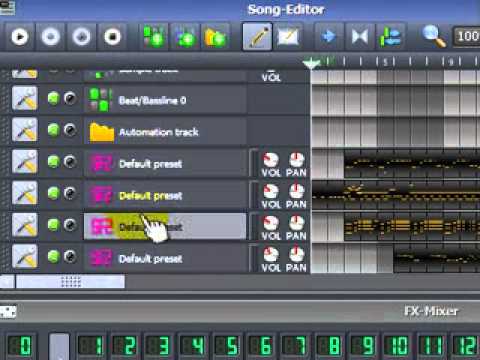

To use one, just drag and drop it into your Song Editor. Click the topmost tab in the left of the LMMS window here, the default instrument plugins are available. More than likely, if you want to sequence music, you want some sound module that you can use as a traditional chromatic instrument. Click on the My Samples tab on the left to see what samples are available from LMMS trigger those from either the Beat+Bassline editor or the Song Editor.


Making musicĪlso included in LMMS are musical instruments, and a few musical toys.
Soundfonts for lmms software#
Alternately, you can use Hydrogen (a free software drum machine quite similar to LMMS in interface and philosophy) to programme your beats, since LMMS will import Hydrogen files. There are 99 free drumkits available from /sprints (they're actually Hydrogen drumkits, but if you unarchive them, you can pull out the raw sound files and use them in LMMS). Look around online and at music shoppes to find good samples for your custom kits. It doesn't have to be the LMMS defaults, and it doesn't even have to be drums. If you're feeling especially creative, you're free to use whatever sampled sound you want in the beat editor. If you want to programme 8 bars of drums, then you must switch on your beats for two blocks in the Song Editor (or three blocks, if you programme 12 bars, or four if you programme 16, and so on). Remember the relationship between the Song Editor and the Beat Editor: if you switch the beat sequence ON for one bar in the Song Editor, then only four bars of your sequence will play. You can sequence the default four bars of four beats, or you can add more bars if you want to sequence longer sections. You're free to sequence during playback, so if you're the type of programmer who likes to hear the changes you're making as you make them, just press play and programme on the fly. Drag and drop samples from the Samples tab into the Beat+Bassline editor, and start building some beats. To sequence this batch of samples, click the first block in the Beat/Bassline 0 track of your Song Editor.
Soundfonts for lmms full#
A full General Midi compliant drumkit is ready for use.

Click on the My Samples tab on the left side of the LMMS window and open the Drums folder. LMMS comes with all you need for drum sequencing out of the box. You'll find plenty to play with in these tabs, and of course you can add more. Click on them to see for yourself what they contain. On the far left of the LMMS window is a stack of tabbed panels, collapsed by default. If you have no idea what you are, then you might as well try a little of everything. If you're a synthesist, you might noodle around with some of the soft synths until you reach LFO nirvana. If you're a skilled musician, you might use sample banks or soundfonts and a MIDI keyboard to play in your own sequences. If you're a loop-driven producer, you will most likely deal mostly with sample tracks. Your individual style and workflow depends entirely on what kind of music producer you are. These are just starting points, provided only to give you an idea of what's possible and where to begin.
Soundfonts for lmms windows#
All of the other windows that you interact with exist in relation to the Song Editor, so use it as your main compositional hub.īy default, the Song Editor pre-populates four channels: This is its sequencer, where you plug in new instruments, samples, drum lines, and automation. The centre of the LMMS interface is its Song Editor window. Best of all, LMMS comes with many ready-to-use instrument and effect plug-ins, presets, and samples, making it one of the easiest music applications on any platform to get started on. It's an everything-including-the-kitchen-sink apps, providing you with all the tools you need to create melodies, lay down a beat (mad, phat, dope, or otherwise), synthesize new sounds, sample, loop, distort, enhance, and, of course, mix it all together. LMMS is a free end-to-end, cross-platform music production suite. In the world of digital audio workstations, the project that does this most profoundly is the Linux Multimedia Studio, better known as LMMS. That's why it's nice, sometimes, to come across a project that brings a bunch of modular technology and binds them together nice and neatly for users. It turns out to be liberating in the end, but it can be overwhelming at first. One thing that confuses some new Linux users is just how modular Linux can be, and on nearly every level.


 0 kommentar(er)
0 kommentar(er)
